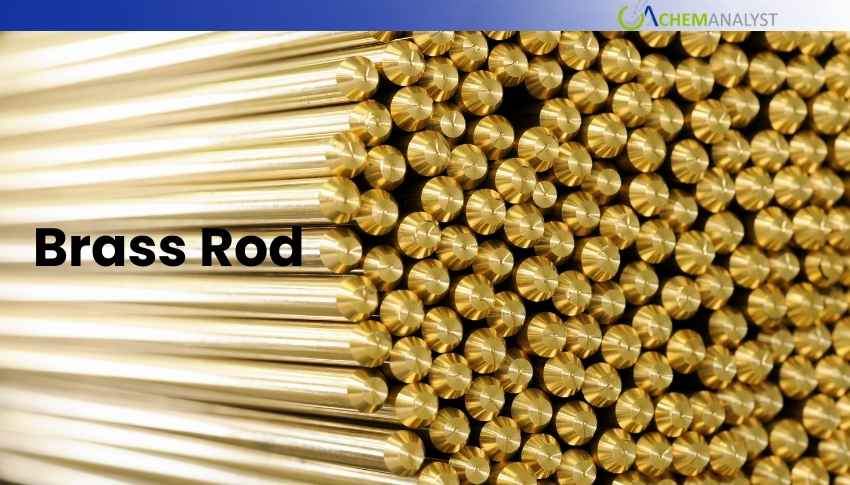Welcome To ChemAnalyst

Europe's brass rod market took a small step back in July 2025, as steady supply and declining demand were present all over the continent, primarily in Italy and France. Producers in both of these markets were also busy keeping consistent production rates, which is quickened by the availability of copper and other raw materials. However, the overall brass rod consumption level has been negatively affected by a large drop in major end-use markets, such as the automotive and construction sectors. A general downward price trend was contributed to by this combination of factors.
The European brass rod market demonstrated a fine equilibrium in July 2025, with strong supply and notably weaker demand. The result was a slight dip in pricing, of around -0.6%, over a month with limited pricing action and a hesitant negative sentiment.
Supply chains for brass rods remained exceptionally stable throughout July. The consistent availability of raw materials was a key factor, with a significant 55.34% month-on-month surge in copper stocks at the London Metal Exchange (LME), reaching a total of 141,750 tonnes. This substantial influx of copper alleviated any potential supply concerns and provided manufacturers with a stable foundation for production costs. While there was a reduction in zinc stocks, it was not severe enough to impact overall margins. European brass rod producers maintained stable operations with no major shutdowns reported, ensuring that a sufficient and steady supply was available on the market.
Demand for brass rods was noticeably weak relative to strong supply with the greatest weakness being in Italy and France. Demand in Italy was stable but lackluster. However, the automotive sector was weak again, with registrations of passenger cars falling by 10.36% m/m to 118,493, The construction sector which is seeing more contraction as civil engineering and housing are now going down, and commercial construction is beginning to slow slightly. There were some more niche brass rod applications in plumbing, electrical fittings, and industrial machinery that provided slight support, but demand was weak overall relative to past demand.
France went into an even deeper downturn. The European construction sector itself as a whole suffered a significant declines, and France experienced the largest decline. All segments were affected – residential, commercial and civil engineering. The automotive sector in France was in a similar situation, with new registrations of passenger cars falling even more steeply, with a 31.37% under last July's new registrations with 116,377 registrations in July. The economic environment in general, characterized by high interest rates and high inflation, is likely a large detriment to the slowdown in industrial activity in turn slowing down consumption of brass rods.
Given that a significant improvement in these core sectors is not anticipated in the immediate future, the pressure on brass rod prices is expected to continue. The resilient supply chain offers a good base for transactions, but the overall weak demand and negative sentiment in key end-use industries suggest a challenging period ahead for the European brass rod market.
We use cookies to deliver the best possible experience on our website. To learn more, visit our Privacy Policy. By continuing to use this site or by closing this box, you consent to our use of cookies. More info.
